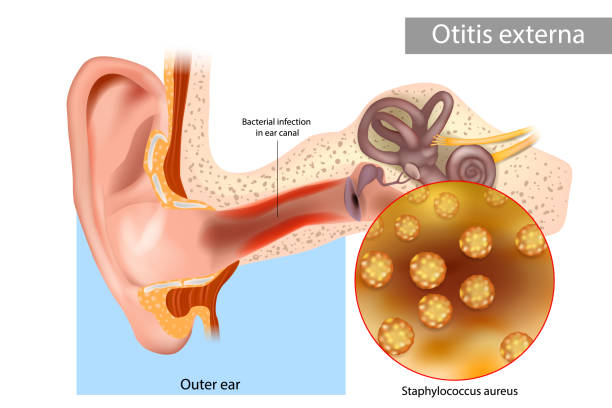Middle ear infections, also known as otitis media, are a common health problem, particularly in children. It is a condition in which the middle ear becomes inflamed and infected, causing pain and discomfort. The symptoms of middle ear infections can range from mild to severe, and prompt treatment is essential to avoid complications. In this article, we will discuss the symptoms of middle ear infections and the treatment options available.
Symptoms of Middle Ear Infections
Middle ear infections often develop as a result of a cold or flu and can cause a range of symptoms, including:
Pain in the ear: This is the most common symptom of a middle ear infection, and the pain may be severe and constant.
Ear drainage: The infected fluid may leak out of the ear, causing a yellow or green discharge.
Hearing loss: Inflammation in the middle ear can cause temporary hearing loss.
Tinnitus: Ringing in the ears is also a common symptom of middle ear infections.
Dizziness: The infection can cause balance problems, leading to dizziness.
Fever: A high temperature is often present in children with middle ear infections.
Fatigue: Children may feel tired and lack energy due to the infection.
Treatment for Middle Ear Infections
Middle ear infections are usually treated with antibiotics, pain relievers, and decongestants. Here are the different treatment options for middle ear infections:
Antibiotics: Antibiotics are the most common treatment for middle ear infections. They help to kill the bacteria that cause the infection and reduce inflammation.
Pain relievers: Pain relievers, such as acetaminophen or ibuprofen, can be used to relieve the pain and discomfort caused by middle ear infections.
Decongestants: Decongestants can be used to reduce swelling in the middle ear and promote drainage of the infected fluid.
Eardrops: Eardrops can be used to relieve pain and discomfort in the ear.
Surgery: In severe cases, surgery may be necessary to drain the infected fluid and repair any damage to the eardrum.
Prevention of Middle Ear Infections
There are several ways to prevent middle ear infections, including:
Washing hands regularly: Regular hand washing can help to reduce the spread of infections.
Avoiding exposure to cigarette smoke: Children exposed to cigarette smoke are at a higher risk of middle ear infections.
Treating colds and flu promptly: Prompt treatment of colds and flu can help to prevent the development of middle ear infections.
Breastfeeding: Breastfeeding can help to reduce the risk of middle ear infections in infants.
In conclusion, middle ear infections are a common health problem that can cause significant pain and discomfort. The symptoms can range from mild to severe, and prompt treatment is essential to avoid complications. Antibiotics, pain relievers, and decongestants are the most common treatments for middle ear infections. Regular hand washing, avoiding exposure to cigarette smoke, and treating colds and flu promptly are effective ways to prevent middle ear infections. If you or your child experience symptoms of a middle ear infection, it is important to seek prompt medical attention.

 Home
Home Health
Health Diet & Nutrition
Diet & Nutrition Living Well
Living Well More
More












